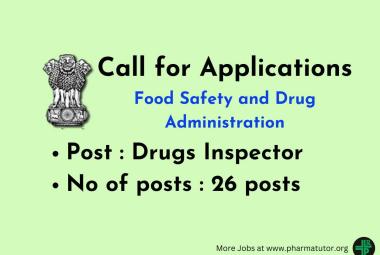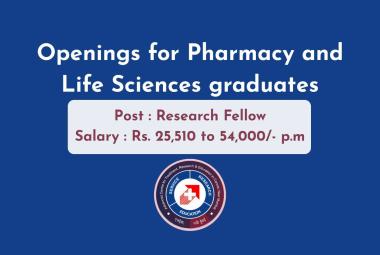ABOUT AUTHORS:
Chandani Joshi*1, Chetana Ribadiya2, Nimish Talaviya3, Dainik Manavar4, Rakesh Radadia5, Dr. Shital Faldu6
1,3,4M.Pharm, Smt. R. D. Gardi B. Pharmacy College, Rajkot
2M.Pharm, Smt. R. B. Patel Mahila Pharmacy College, Atkot
5M.Pharm, Mts. V. B. Manvar Pharmacy college, Rajkot.
6M.Pharm, Ph. D., Principal, Smt. R. D. Gardi B. Pharmacy College, Rajkot
*chandani11aug@gmail.com
ABSTRACT
A simple, rapid, accurate, precise and reproducible reverse phase high performance liquid chromatographic method has been developed for the estimation of Tapentadol hydrochloride and paracetamol was determined using reversed phase liquid chromatography method using ODS Hypersil C18 column (250 mm × 4.6 mm id, 5μm as a stationary Phase and Methanol : Phosphate Buffer (pH 6.5) (50:50, v/v) as a mobile phase pumped at a flow rate of 1.5 ml/min. Quantification was achieved with ultraviolet detection at 225 nm over concentration ranges of 130-390 μg/ml for Paracetamol and 20-60 μg/ml for Tapentadol hydrochloride with mean accuracy 100.12 ± 0.3329 and 98.97±0.6345 %, for paracetamol and Taprntadol hydrochloride respectively. The method was successively applied to dosage forms as no chromatographic interferences from the tablet excipients were observed. The method retained its accuracy and precision when the standard addition technique was applied.
REFERENCE ID: PHARMATUTOR-ART-1945
INTRODUCTION
Paracetamol (PCM) is chemically 4-hydroxyacetanilide (Figure 1-A) used as analgesic and antipyretic.[1]Paracetamol acts primarily in the CNS, increasing the pain threshold by inhibiting both isoforms of cyclooxygenase, COX-1, COX-2 and COX-3 enzymes involved in prostaglandin (PG) synthesis. [2]
Tapentadol [4],[ 7-9] is a novel centrally acting analgesic. It has structural similarities to tramadol. The drug has a unique mode of action in that it functions as an agonist at the m-opioid receptor, and as a norepinephrine reuptake inhibitor. This dual mode of action provides analgesia at similar levels of more potent narcotic analgesics such as hydrocodone, oxycodone and morphine, but with a more tolerable side effect profile. The chemical name is 3 - [(1R,2R) -3 - (dimethylamino) –l - ethyl-2 -methylpropyl] phenol monohydrochloride.
The therapeutic importance of these two compounds justifies establishing analytical methods for its determination in bulk and pharmaceutical dosage form.
The chemical structures of Paracetamol and Tapentadol are shown in Figure 1 (A), (B). [1, 4]
Figure-1: Chemical structure of (A) Paracetamol and (B) Tapentadol hydrochloride
Paracetamol is official in IP, BP and USP and is estimated by UV-Visible Spectrophotometric method as per IP, USP and BP. [3, 5, 6] In BP a redox titration for PCM is given for drug substance.[6]Literature review also reveals HPLC, UV spectrophotometric and HPTLC method for the estimation of PCM with other drugs. [7, 8, 9] Literature survey does not reveal any simple spectrophotometric method of Paracetamol and Tapentadol hydrochloride in bulk or Pharmaceutical dosage form. So the objective of this work was to develop simple, precise and rapid spectrophotometric methods for combined dosage form containing Paracetamol, and tapentadol.
MATERIALS AND METHODS
Material and reagent
Paracetamol (PCM)was obtained from Smt. R. D. Gardi B. Pharmacy College, Rajkot and Tapentadol hydrochloride (TP) bulk powder was kindly gifted by Ami life science, baroda, Gujrat. HPLC grade methanol and water, AR grade Potassium Dihydrogen Ortho phosphate, triethylamine was used, all were provided by Rankem chemical Ltd.
Chromatographic Conditions
A High pressure liquid chromatography (LC 100 Cyber lab) with variable wavelength programmable UV Visible detector and C-18 column [250mm, 4.6m, 5μm] was used. A freshly prepared Phosphate buffer (pH-6.5 adjusted with triethylamine): Methanol (50:50 v/v) was used as the mobile phase. Buffer solution was prepared by dissolving 6.5 gms of Potassium Dihydrogen Ortho phosphate in 900ml of water. triethylamine was added, just to adjust ph 6.5 and volume was then adjusted upto 1000ml with water. Mobile phase was filtered through a 0.45 μm membrane filter and sonicated before use. The flow rate of the mobile phase was maintained at 1.5 ml/min.
Preparation of Standard Solution
Preparation of standard stock solution of PCM
Accurately weighed quantity of 25 mg of PCM was transferred into 25 ml volumetric flask. Add methanol and Shake it. Final volume of solution was obtained by adding methanol upto the mark. This stock solution containing 1 mg/ml of PCM in 25 ml volumetric flask. This will give a stock solution having strength of 1000 μg/ml.
Preparation of standard stock solution of TP
Accurately weighed quantity of 25 mg of TP was transferred into 25 ml volumetric flask. Add methanol and Shake it. Final volume of solution was obtained by adding methanol upto the mark. This stock solution containing 1 mg/ml of TP in 25 ml volumetric flask. This will give a stock solution having strength of 1000 μg/ml.
Preparation of working standard solution of TP
A solution of 100 μg/ml of TP solution was prepared by diluting 1 ml of stock solution with methanol in 10ml volumetric flask upto the mark.
Preparation of combined standard solution of PCM and TP
65 mg of standard PCM and 10 mg of standard TP were weighed and transferred to 100 ml volumetric flask and shake for 10 min in 50 ml of HPLC grade methanol. After that the volume was made upto the mark with methanol to obtain 650 μg/ml of PCM and 100 μg/ml of TP. The solution was labeled as ‘Stock solution A’
Calibration curves for PCM and TP.
From the ‘Stock solution A’ (650 μg/ml of PCM and 100 μg/ml of TP) 2, 3, 4, 5 and 6 ml of aliquot was pipette out in 10 ml volumetric flask and made the volume upto the mark with diluent (mobile phase) to get 130-390 μg/ml of PCM and 20-60 μg/ml of TP. The chromatogram was recorded under the finalized chromatographic conditions as described above after getting a stable baseline. Peak areas were recorded for all the peaks. Calibration curves of PCM and TP were constructed by plotting the peak area of PCM vs. PCM concentration and peak area of TP vs. TP concentration, respectively.
Optimization of the HPLC method:
The pure drug solution of Tapentadol hydrochloride and Paracetamol were injected individually into HPLC system and allow run in different mobile phases like Methanol phosphate buffer, ACN: acetate buffer, methanol: Acetonitrile: water, ACN: water and methanol: water were tried in order to find the optimum conditions for the separation of Tapentadol hydrochloride and Paracetamol. It was found that mobile phase containing Phosphate buffer (pH -6.5 adjusted with triethylamine):methanol (50:50 v/v), at a flow rate of 1.5 ml/min with detection at 225 nm gave satisfactory results with sharp well defined and resolved peaks with minimum tailing as compared to other mobile phases. Under these conditions the retention times were typically 2.30 min for Paracetamol and 5.73 min for Tapentadol hydrochloride.
Validation of The Method[10-11]
Linearity
Linearity of the proposed method was verified by analyzing five combined different concentrations in the range of 130-390 μg/ml and 20-60 μg/ml for PCM and TP. Each concentration was made five times. The calibration curve of Peak area vs. respective concentration was plotted and regression line equation for PCM and TP was calculated.
Precision
The repeatability was evaluated by combined standard solutions of 3 concentration and 3 replicates of each concentration of PCM and TP.
The intraday precision of the developed method was evaluated by analyzing combined samples of different concentrations of PCM and TP three times on the same day and % RSD was calculated.
The inter day precision was evaluated from the combined concentration of PCM and TP on three different days and % RSD was calculated.
Accuracy
The accuracy of the method was performed by conducting the recovery studies (80, 100 and 120%) of pure drugs from marketed formulation, by standard addition method. The actual and measured concentrations were then compared.
LOD (Limit of Detection)
The LOD is estimated from the set of 5 calibration curves used to determine method linearity.
The LOD may be calculated as
LOD = 3.3 x (σ/ S)
Where, σ= the standard deviation of Y- intercept of 5 calibration curves.
S = the mean slope of the 5 calibration curves.
LOQ (Limit of Quantitation)
The LOQ is estimated from the set of 5 calibration curves used to determine method linearity.
The LOQ may be calculated as
LOQ = 10 x (σ/ S)
Where, σ= the standard deviation of Y- intercept of 5 calibration curves.
S = the mean slope of the 5 calibration curves.
System Suitability
Combined standard solutions of PCM (260 μg/ml) and TP (40 μg/ml) were prepared and analyzed six times. Chromatograms were studied for different parameters such as tailing factor, resolution and theoretical plates to see that whether they complies with the recommended limit or out of recommended limit.
Simultaneous Estimation of PCM And TP in Combined Dosage Form
To determine the content of PCM and TP in commercial tablets (each tablet containing 325 mg PCM and 50 mg TP), 20 tablets were weighed and finely powdered. A quantity of powder equivalent to 325 mg of PCM and 50 mg of TP was weighed accurately and transferred to 100 ml volumetric flask and the volume was made up with the methanol and then filtered through 0.5 μm whatman paper. From the above prepared solution, further dilutions were prepared in the linearity range using diluent(mobile phase). The chromatogram was taken at selected wavelengths and peak areas were found out. The analysis was done in five replica.
RESULTS AND DISCUSSION:
The results of validation studies on simultaneous estimation method developed for Paracetamol and tapentadol hydrochloride in the current study involving phosphate buffer (pH-6.5): methanol(50:50 v/v), as the mobile phase for HPLC are given below.
Figure 2: Chromatogram of Paracetamol (tR 2.30 min) and tapentadol hydrochloride
(tR 5.73 min)
Linearity and range
The linearity study was carried out for both drugs at five different concentration levels. The linearity of PCM and TP was in the range of 130-390 μg/mland 20-60 μg/mlrespectively. Correlation coefficient for calibration curves of PCM and TP was found to be 0.9961 and 0.9973 respectively
Figure 3 : Calibration curve for Paracetamol
Figure 4 : Calibration curve for Tapentadol hydrochloride.
Table 1 : Linearity data for Paracetamol and Tapentadol hydrochloride.
|
Sr. No. |
Paracetamol |
Tapentadol hydrochloride |
||
|
Conc. (μg/ml) |
Peak Area* ± S.D. |
Conc. (μg/ml) |
Peak Area* ± S.D. |
|
|
1. |
130 |
345061±533.2803 |
20 |
26404.37±333.5696 |
|
2. |
195 |
502850.2±751.4710 |
30 |
36994.23±326.8595 |
|
3. |
260 |
630542.4±1474.954 |
40 |
47843.83±574.8893 |
|
4. |
325 |
742357.9±8049.161 |
50 |
56128.3±427.3856 |
|
5. |
390 |
868320.3± 13988.09 |
60 |
65744.33±384.1151 |
Table 2: Statistical data of PCM and TP by RP-HPLC
|
Parameter |
Paracetamol |
Tapentadol |
|
Wavelength (nm) |
225 |
|
|
Linearity (μg/ml) |
130-390 |
20-60 |
|
Slop |
1978.50 |
984.14 |
|
Intercept |
103416 |
7197.4 |
|
Mean of slop |
1968.73 |
978.14 |
|
Standard deviation of intercept |
1113.05 |
634.71 |
|
Limit of detection(μg/ml) |
1.8657 |
2.1414 |
|
Limit of quantification (μg/ml) |
5.6536 |
6.4889 |
PRECISION
The results of the repeatability, intra-day and inter-day precision experiments are shown in Table 3,4 and 5. The developed method was found to be precise as the RSD values for repeatability of intra-day and interday precision studies were < 2 %, respectively which is under limit as per recommendations of ICH guidelines.
Table 3 : precision study - Repeatability
|
Paracetamol |
|||
|
Conc. (µg/ml) |
Peak area |
Mean ± S.D. |
% RSD |
|
260 |
626786.1 |
629360.7± 2574.472
|
0.4091 |
|
625955.3 |
|||
|
631125.2 |
|||
|
633152.4 |
|||
|
630980.1 |
|||
|
628165.2 |
|||
|
Tapentadol hydrochloride |
|||
|
Conc. (µg/ml) |
Peak area |
Mean ± S.D. |
% RSD |
|
40 |
47285.7 |
47286.4± 370.408 |
0.7833 |
|
47680.6 |
|||
|
46985.3 |
|||
|
47105.9 |
|||
|
47850.4 |
|||
|
46810.5 |
|||
Table 4 : Interday data for Paracetamol and Tapentadol hydrochloride
|
Paracetamol |
Tapentadol hydrochloride |
||||
|
Conc. (µg/ml) |
Peak area* ±SD |
% RSD |
Conc. (µg/ml) |
Peak area* ± SD |
% RSD |
|
130 |
343619.2±790.8935 |
0.2302 |
20 |
25833.25±29.6785 |
0.1149 |
|
260 |
630164.8±1147.729 |
0.1821 |
40 |
47494.72±83.1843 |
0.1751 |
|
390 |
872158.3±8004.388 |
0.9178 |
60 |
65200.54±199.771 |
0.3064 |
[* mean value of 3 determinations]
Table 5 : Intraday data for Paracetamol and Tapentadol hydrochloride
|
Paracetamol |
Tapentadol hydrochloride |
||||
|
Conc. (µg/ml) |
Peak area*±SD |
% RSD |
Conc. (µg/ml) |
Peak area* ± SD |
% RSD |
|
130 |
342237.8±2617.196 |
0.7647 |
20 |
26455.59±86.273 |
0.3261 |
|
260 |
633244.1±1381.279 |
0.2181 |
40 |
47916.77±70.609 |
0.1474 |
|
390 |
874541.4±5569.113 |
0.6368 |
60 |
65502.31±171.514 |
0.2618 |
[* mean value of 3 determinations]
RECOVERY STUDIES:
As shown from the data in Table 6, good recoveries of the Paracetamol and tapentadol hydrochloride in the range from 98 to 102 % were obtained at various added concentrations.
Table 6 : Accuracy data
|
Paracetamol |
||||||||
|
Amt of PCM In sample |
Amt of STD. added |
Avg. peak area |
Amt Recovered* ± SD |
%Recovered |
||||
|
130 |
104 |
562139.03 |
231.85±1.4085 |
99.08 |
||||
|
130 |
130 |
615453.93 |
258.80±0.5405 |
99.54 |
||||
|
130 |
156 |
670251.07 |
286.50±0.6623 |
100.17 |
||||
|
Tapentadol hydrochloride |
||||||||
|
Amt of TP In sample |
Amt of STD. added |
Avg. peak area |
Amt Recovered* ± SD |
%Recovered |
||||
|
20 |
16 |
42384.71 |
35.75±0.6166 |
99.32 |
||||
|
20 |
20 |
46046.0 |
39.47±0.2871 |
98.69 |
||||
|
20 |
24 |
50896.73 |
44.40±0.3961 |
100.92 |
||||
Analysis of marketed formulation by developed method
Applicability of the proposed method was tested by analysing the commercially available formulation VORTH TP PLUS, and it is found to be 100.12% and 98.98% for PCM and TP respectively. The results are shown in table 7
Table 7 : Analysis of marketed formulation
|
Brand Name |
Labeled Claim |
% Mean Recovery *± SD |
||
|
PCM |
TP |
PCM |
TP |
|
|
VORTH TP PLUS |
325 mg |
50 mg |
100.12 ± 0.3329 |
98.97 ± 0.6345 |
[* mean value of 5 determinations]
SYSTEM SUITABILITY STUDIES
The column efficiency, resolution and peak asymmetry were calculated for the standard solutions and the results are expressed in Table 8. The values obtained demonstrated the suitability of the system for analysis of this drug combination.
Table 8 : System Suitability Studies
|
Parameter |
Result |
|
|
|
Paracetamol |
Tapentadol HCl |
|
Theoretical plates per column |
2940.27 |
2634.10 |
|
Tailing factor |
1.17 |
1.76 |
|
Resolution |
0.00 |
9.18 |
|
Retention time |
2.30 |
5.73 |
Conclusion:
The proposed RP-HPLC method for the simultaneous estimation Paracetamol and tapentadol hydrochloride in combined capsule dosage forms is accurate, precise, linear, rugged, robust, simple, rapid, and selective. It can be adopted efficiently and easily for routine quality control (QC) analysis of raw materials, formulations and dissolution testing with accuracy and repeatability of results.
ACKNOWLEDGEMENT
The authors are thankful to Smt. R. D. Gardi B. Pharmacy College, Rajkot, Gujarat, India for providing necessary facilities to carry out this work.
REFERENCES
1.Sweet man SC., The Martindale: The Complete Drug Reference; 36th Edn; Pharmaceutical Press, London, UK; 2009 :978.
2.Rang HP, Dale MM, Ritter JM and Moore PK, Pharmacology, 5th Edn; Elsevier, New Delhi ;2006: 251,442.
3.The United States Pharmacopoeia-27, NF-22, Asian edition, Rockville, MD: The US Pharmacopoeial Convention, Inc.; 2004 :1397-98.
4.Drug base :Drugs?[Online] 2012 March 30 [cited 2012 Dec 15]; Available from: URL: www.druginfo.nlm.nih.gov
5.Government of India. Ministry of health and family welfare. Indian Pharmacopoeia Vol. I & II. The Controller of Publication, New Delhi; 2007: 900-03
6.British Pharmacopoeia, Volume I-II, London: The Department of Health,: HMSO Publication; 2009: 2789
7.Vichare V, Mujgond P, Tambe V and Dhole SN. Simultaneous Spectrophotometric determination of Paracetamol and Caffeine in Tablet formulation. International Journal of PharmTech Research, 2010; 2(4): 2512-2516.
8.Narayan S, Kumar P, Sindhu R. K, Tiwari A and Ghosh M, “Simultaneous analysis of Paracetamol and Tramadol – Analytical method development & validation”, Scholars Research Library, April 2009;72-78
9.Birajdar A.S, Meyyanathan S.N and Suresh B, “Method Development and Validation for the Simultaneous Determination of Paracetamol and Tramadol in Solid Dosage Form by RP-HPLC”, International Journal of Pharmaceutical Research and Development, December 2009; 52-57
10.ICH guideline Q2 (R1). Validation of analytical procedures: text and methodology. Geneva: 1996.
11.Beckett AH. And Stenlake JB. Practical Pharmaceutical Chemistry, part-II; 4th Edn; CBS Publisher and Distributors, New Delhi; 2007: 275-336
NOW YOU CAN ALSO PUBLISH YOUR ARTICLE ONLINE.
SUBMIT YOUR ARTICLE/PROJECT AT articles@pharmatutor.org
FIND OUT MORE ARTICLES AT OUR DATABASE









